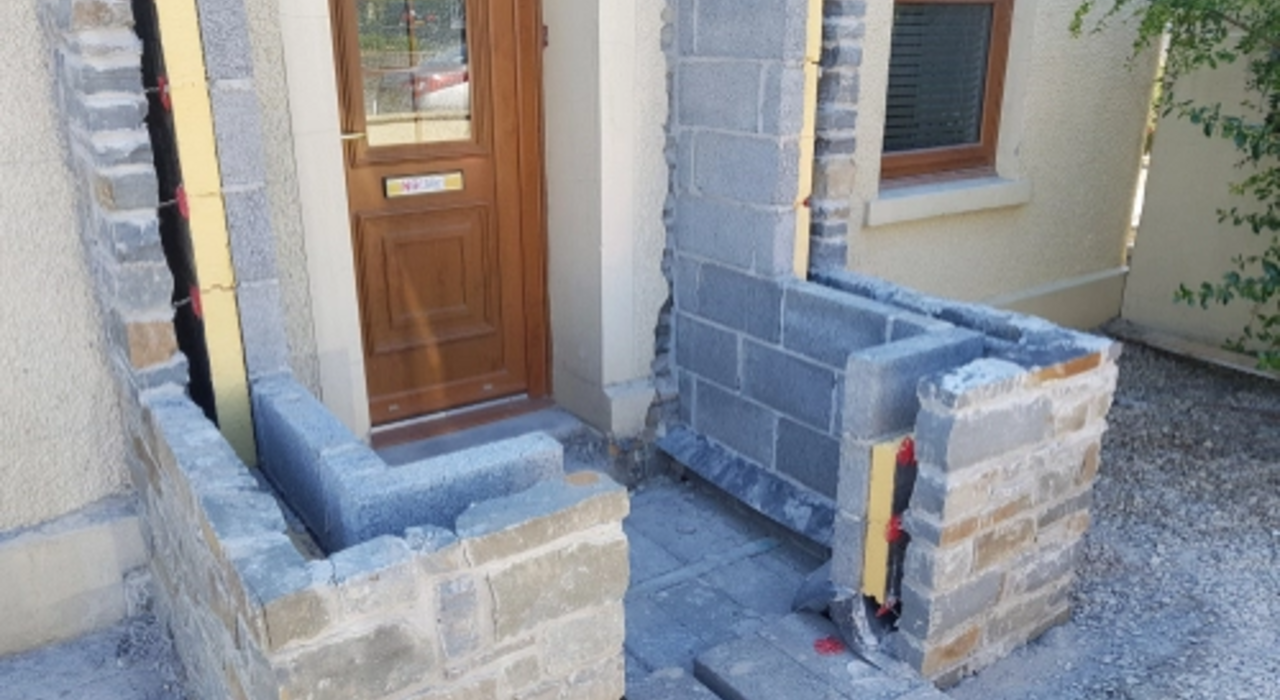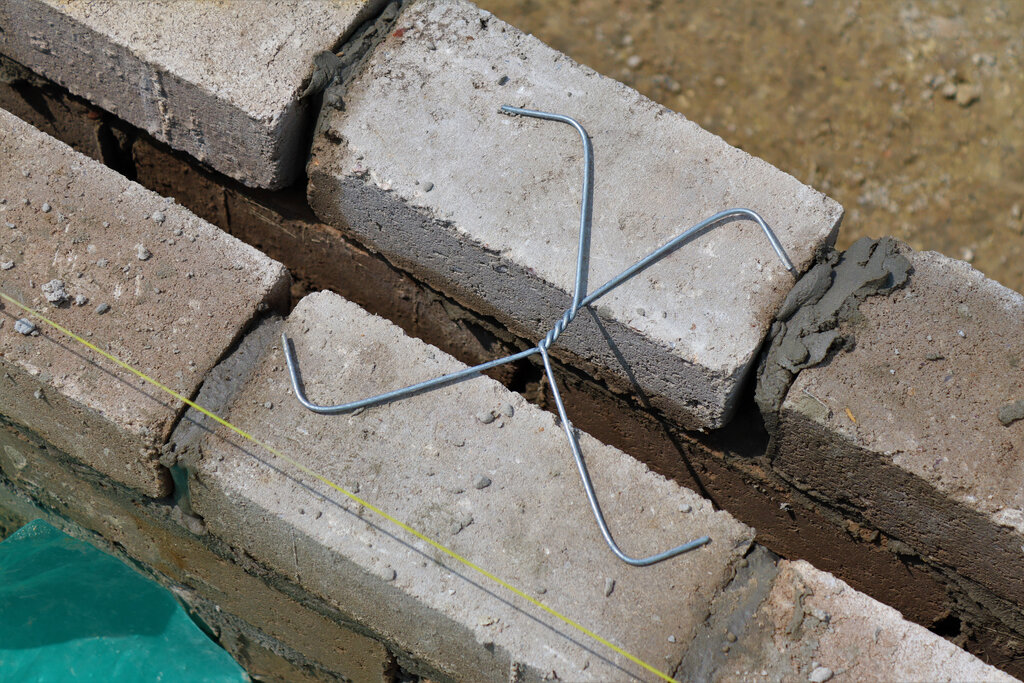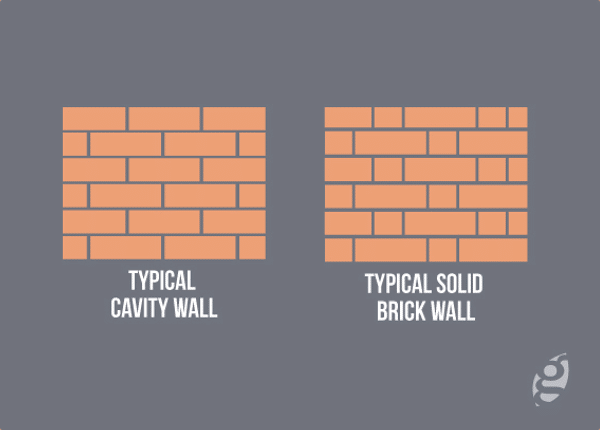
In the quest for an energy-efficient and cosy home, understanding the type of walls your house has is fundamental. Across the UK, houses predominantly feature cavity walls or single-leaf (solid) walls. Each type has its characteristics, benefits, and implications for insulation, maintenance, and energy savings. This guide will help you identify which type of wall your home has and the differences between them.
What are cavity walls?
Cavity walls are designed to improve thermal efficiency and protect against moisture penetration. These walls comprise two separate 'leaves' or layers, with a gap or 'cavity' between them. Introduced in the UK in the early 20th century, cavity wall construction became widespread due to its effective insulation properties and ability to prevent dampness from reaching the interior of a building. The outer leaf of a cavity wall is typically constructed from bricks or stone, serving as the building's exterior facade. This outer layer is exposed to the external environment and is designed to shed water effectively. The inner leaf, made of brick, concrete blocks, or other materials, provides structural support and forms the internal wall surface. The cavity between these two leaves acts as a barrier to moisture, preventing rainwater that penetrates the outer leaf from reaching the inner leaf. Modern cavity walls often incorporate insulation materials within the cavity, significantly improving the wall's thermal performance by reducing heat transfer.
How to identify cavity walls
- Look at the Brick Pattern: If the bricks on your outer walls are laid in a regular pattern with all bricks facing the same direction (long side visible), it's likely a cavity wall. This pattern is because the wall is made of two layers, and the visible pattern is of the outer layer.
- Measure Wall Thickness: Measure the thickness of your wall at a door or window. If the wall is more than 260mm thick, there's a good chance it incorporates a cavity.
- Check House Age: If your home was built after the 1920s, it's more likely to have cavity walls, as this became the standard construction method in the UK.
[caption id="attachment_73861" align="aligncenter" width="1024"] A cavity wall is identified by an inner and outer leaf, joined by metal ties[/caption]
A cavity wall is identified by an inner and outer leaf, joined by metal ties[/caption]
Benefits of cavity walls
- Improved Thermal Efficiency: The air gap in the cavity provides thermal insulation by reducing heat transfer through the wall. This is further enhanced when the cavity is filled with insulation materials, helping to keep the interior of the building warm in the winter and cool in the summer.
- Moisture Management: Cavity walls help prevent moisture and rainwater from penetrating the inner living spaces. The cavity allows water that seeps through the outer leaf to drain away, reducing the risk of damp issues inside the property.
- Energy Savings: Due to their thermal efficiency, buildings with insulated cavity walls require less energy for heating and cooling, leading to lower energy bills and reduced carbon emissions.
What are single-leaf walls?
Single-leaf walls, often called solid walls, embody a construction method characterised by a singular, robust layer of masonry. This technique, prevalent in buildings constructed before the widespread adoption of cavity walls in the 1920s, utilises materials such as bricks, stones, or concrete blocks to form the entire breadth of the wall. Unlike their cavity counterparts, single-leaf walls do not feature an intervening gap between two masonry layers, making them distinctive for their simplicity and historical significance in the UK and beyond. The construction material for single-leaf walls can significantly vary, influenced by regional availability and historical context. For instance, stone was commonly used in areas where it was naturally abundant, while bricks were favoured in others. The choice of material dictated the wall's appearance, thermal mass, and durability. The thickness of a single leaf wall can range widely, often correlating with the building's age, the material's inherent strength, and the climate. Older stone walls, for example, may be considerably thicker than brick walls, offering more substantial resistance to external temperatures and structural loads. Despite lacking the internal support structure that cavity walls might have, single-leaf walls are often load-bearing. Their ability to support the weight of the structure above is inherent in their design, necessitating careful consideration during modifications or insulation upgrades to preserve structural integrity.
How to identify single-leaf walls
- Observe the Brickwork: In single-leaf walls, the brick pattern usually alternates between the long side of the brick (the stretcher) and the short end (the header), creating a solid, thicker wall with a more irregular pattern.
- Wall Thickness: Measure the wall thickness at a door or window. If it's less than 260mm, it likely indicates a single-leaf wall.
- Consider the Building Age: Homes built before the 1920s in the UK typically have single-leaf walls.
Challenges
- Insulation and Energy Efficiency: One of the main challenges with single-leaf walls is their relatively poor insulation performance. Solid walls are less efficient at retaining heat without the air gap in cavity walls, leading to higher energy usage and costs. Upgrading these walls for better thermal efficiency typically involves adding insulation internally or externally.
- Moisture Management: Solid walls are more susceptible to moisture penetration from the external environment, potentially leading to damp issues inside. Effective moisture management, such as using appropriate external finishes or internal damp-proofing measures, is crucial to protect the building fabric and interior living conditions.

How to insulate single-leaf and cavity walls
Insulating single-leaf or solid walls is more complex and often invasive than insulating cavity walls. Options for insulating these walls include internal insulation and external wall insulation. Both methods have their merits and drawbacks. Internal insulation can reduce the usable interior space and involve more disruption during installation. However, it can be a more cost-effective solution for improving thermal performance. While typically more expensive, external insulation can dramatically enhance a building's facade. EWI protects the existing masonry from weathering and does not reduce interior space. It is particularly favoured in conservation areas where altering the internal character of a building is undesirable. Both approaches require careful consideration of the building's breathability to avoid trapping moisture within the walls. Trapped moisture could lead to damp issues. With their dual-layer construction separated by a gap, cavity walls offer a straightforward insulation opportunity. The process involves injecting insulating material into the cavity from the outside. This can be done relatively quickly and without major disruption to the household. Materials commonly used include mineral wool, polystyrene beads, or polyurethane foam. These materials have thermal performance, moisture resistance, and durability advantages. The choice of insulation material and the injection method requires professional assessment to ensure compatibility with the wall's construction and the local climate. Once installed, cavity wall insulation can significantly reduce heat loss, leading to lower heating bills and improved comfort indoors.
